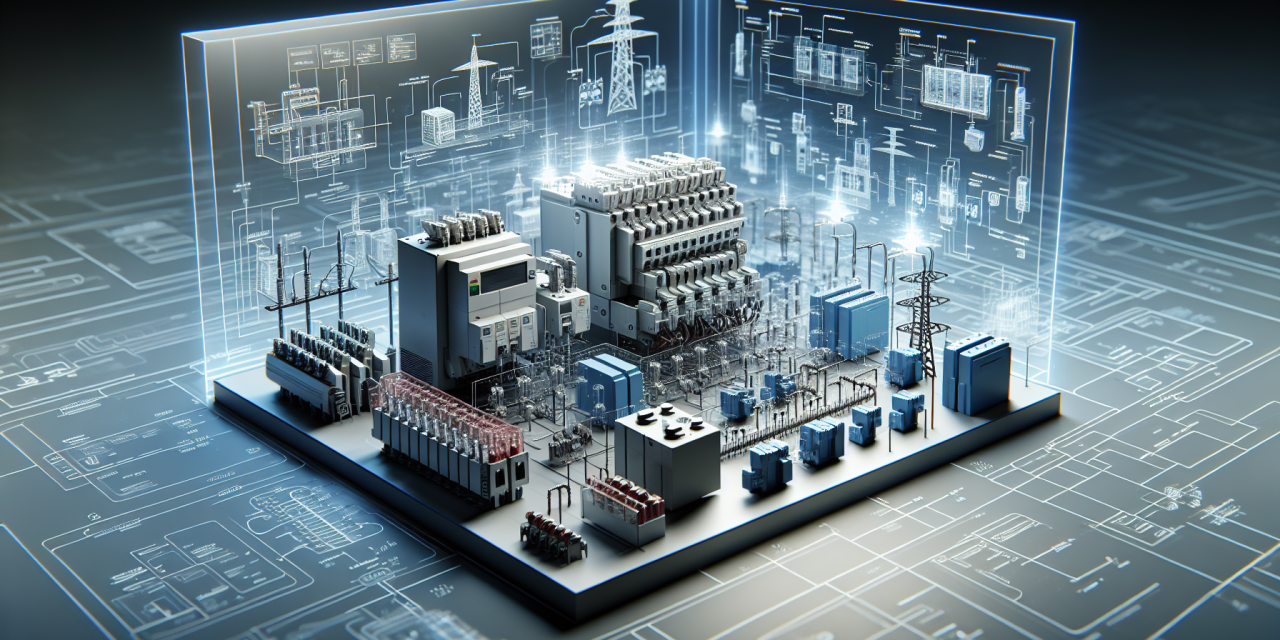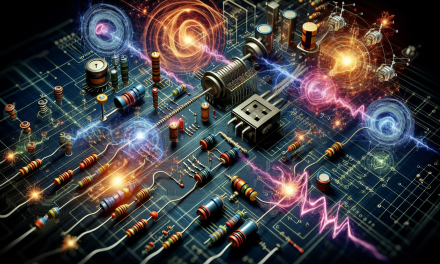Table of Contents
Introduction
Electrical power systems form the backbone of modern energy distribution, ensuring that electricity reaches homes and businesses efficiently and safely. However, with great power comes great responsibility. Protecting these systems from faults and failures is crucial. This article delves into the realm of electrical power system protection, exploring essential devices and design strategies. For a thorough understanding, take a look at the Electrical Power System Protection Course: Devices & Strategies, which serves as a valuable resource in this field.
Importance of Power System Protection
In today’s world, where electricity plays a pivotal role in everyday life, protecting power systems is paramount. Here are several reasons why:
1. Safeguarding Equipment and Infrastructure
Power systems are equipped with various devices like transformers, generators, and transmission lines. To prevent damage to these components in the event of faults, implementing protective measures is essential. Without reliable protection, failures can lead to costly repairs and extended downtime.
2. Ensuring Safety
The safety of personnel working around electrical equipment is non-negotiable. Proper protection mechanisms help prevent hazardous situations, ultimately ensuring the safety of workers and the public. Shock hazards, fire risks, and explosions are potential dangers that strong safety protocols can mitigate.
3. Enhancing System Reliability
Reliability is the cornerstone of any electrical system. A robust protection scheme minimizes the risk of cascading failures. By quickly isolating faults, the system can continue to function, maintaining service and preventing widespread outages.
4. Compliance with Regulations
Regulatory bodies impose strict standards for electrical installations, and compliance is crucial for operational integrity. Adhering to power system protection guidelines not only enhances safety but also fulfills legal requirements, providing peace of mind to operators.
Key Devices in Power Protection
A variety of devices play pivotal roles in the protection of electrical power systems. Understanding each component and its function helps in designing an effective protection scheme.
1. Circuit Breakers
Circuit breakers are among the most integral devices in power protection. They automatically disconnect a circuit when an overload or fault is detected. This quick response prevents damage and maintains system integrity.
2. Relays
Relays serve as the brain of protection systems. They monitor conditions and activate circuit breakers when necessary. Various types of relays are tailored for specific applications, enhancing the overall protection scheme.
3. Fuses
Fuses act as a sacrificial element, designed to protect the circuit by melting under excessive current flows. They are simple but effective components in safeguarding electrical systems.
4. Protection and Control Devices
Advanced protection and control devices, including digital relays, fuse monitoring systems, and fault recorders, provide enhanced monitoring and management capabilities. These devices help operators gain insights into system performance and pinpoint issues swiftly.
Designing an Effective Power Protection System
Designing a robust power protection system involves several critical steps. Each phase ensures that the system operates smoothly while mitigating potential risks.
1. Understanding Load Characteristics
Firstly, evaluating load characteristics is essential. Knowing the nature of the loads helps in selecting appropriate protective devices. Different loads may have varying tolerance levels to faults, affecting device selection.
2. Assessing Fault Levels
Next, understanding the fault levels in the system aids in determining the appropriate ratings for devices like circuit breakers and fuses. Accurate assessments result in better protection and system reliability.
3. Implementing a Coordination Plan
Coordination among protective devices is crucial. A well-coordinated system ensures that the device closest to the fault operates first, allowing the remaining system to remain unaffected. Proper coordination reduces unnecessary outages.
4. Regular Testing and Maintenance
After implementing the protection system, regular testing and maintenance are vital. Scheduled inspections and testing ensure that devices are in optimal working condition. This proactive approach avoids unexpected failures and prolongs equipment life.
Emerging Trends and Technologies
As technology advances, so does the field of electrical power system protection. Keeping abreast of new trends enhances the effectiveness and efficiency of protection schemes.
1. Smart Grids
Smart grids represent one of the most significant advancements in power systems. These integrated systems optimize electricity distribution and improve protection with real-time data and communication capabilities. For engineers, understanding smart grid technologies is fundamental for modern power management. This topic is explored in-depth in articles like An In-depth Exploration of Smart Grids for Non-Engineers.
2. Digital Protection Technologies
Digital protection technologies provide enhanced monitoring capabilities. These include advanced algorithms and data analysis methods that offer higher precision in fault detection and system management.
3. Internet of Things (IoT) Integration
IoT integration has transformed how power systems are monitored and controlled. By connecting devices to the internet, remote monitoring and management become feasible, enhancing system resilience and responsiveness.
4. Condition-Based Maintenance
Condition-based maintenance empowers operators to perform maintenance based on the actual condition of equipment, optimizing costs and improving uptime. This proactive strategy utilizes data from smart devices to predict failures before they happen.
Frequently Asked Questions
1. What is the main purpose of electrical power system protection?
The primary purpose of electrical power system protection is to safeguard the equipment and personnel from faults and failures. Effective protection systems ensure reliable electricity supply and enhance safety measures.
2. How are circuit breakers different from fuses?
Circuit breakers and fuses both serve to protect circuits, but they differ in operation. Circuit breakers can be reset after tripping, while fuses need to be replaced once they have melted.
3. Why is regular testing and maintenance necessary?
Regular testing and maintenance are crucial to ensure the continuous operation of protective devices. It helps identify and rectify issues before they lead to system failures.
4. What role do smart grids play in power protection?
Smart grids enhance power protection by leveraging real-time data and communication technologies. They improve monitoring, fault detection, and system management, ultimately leading to increased reliability.
Conclusion
To sum up, electrical power system protection is a vital aspect of maintaining the reliability and safety of energy distribution systems. Understanding the devices involved and the strategies for designing an effective protection scheme is essential for anyone working in the electrical field. By staying informed about emerging trends and technologies, including smart grids and digital protection, you can contribute to the advancement of power system protection. For further insights, you may explore related articles like Navigating the Future of Power: A Deep Dive into Modern Electrical Power Systems and Mastering Power System Protection and Reliability Today. Through continuous learning, professionals can stay ahead in the field of electrical power system protection.





